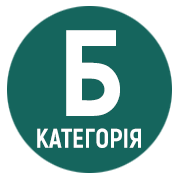THE DOCTRINE AND IDEOLOGY OF STRIGOLISM AS AN ATTEMPT TO FORM A NEW WORLDVIEW PARADIGM ON THE TERRITORY OF THE NORTH-EASTERN RUSI LANDS IN THE 14TH – EARLY 15TH CENTURIES
Abstract
The article analyzes the main elements of the beliefs of the strygolniks, reveals their features based on a detailed analysis of the sources available to us. The consideration of doctrine and ideology was carried out based on the understanding that the strigonik movement was quite local in time and space. It is emphasized that this heretical movement covered only Novgorod and Pskov, most likely even without the district, that is, it was an urban movement. But even within the largest cities of the north-eastern Russian lands, it did not become massive enough to fill the pages of chronicles with reports about itself. Despite this, strigolism caused correspondence between the Novgorod and Pskov authorities (secular and spiritual) with the highest church hierarchs – the Patriarch of Constantinople and the Metropolitan of Moscow. This testifies to the seriousness of the problem facing the church in Novgorod and Pskov. This thesis is confirmed by active measures to eradicate the first organized heretical movement in North-Eastern Russia: the persecution of Archbishop Moisei, the anti-strigolnitsa mission of Archbishop Dionysius, the exposure of Bishop Stefan of Perm, possibly the cathedral court presided over by Novgorod and Pskov. Attention was also paid to the fact that the strigolniks were not completely original religious thinkers. Their worldview was hardly fundamentally different from that of the church. There was no intellectually sophisticated humanistic criticism or rationalism in the ideological doctrine. At the same time, the Strigolnyt doctrine was dogmatically impeccable, as even its most ardent opponents recognized. In general, the heresy of the strygolniks is considered as a kind of religious phenomenon of spiritual life in the specified region of Eastern Europe. The creed of heretics is interpreted, first of all, as a reaction of a part of the population to the transformation of the status of the church in society and the ways and methods of its achievement. Waging a sharp polemic with the official church, the strygolniks denied the main Christian dogmas, confessed to Mother Earth, did not recognize the clergy as an estate endowed with grace, and accused priests of being appointed “for wages”. The rapid spread of such ideas in Novgorod and Pskov became the reason for the active struggle of the official church with heretics.
References
2. Алексеев А.И. К изучению ереси стригольников. Древняя Русь. 2004. № 4918). С. 22–34. URL: http://www.drevnyaya. ru/vyp/stat/s4_18_2.pdf.
3. Афанасьев А.Н. Поэтические воззрения славян на природу. Опыт сравнительного изучения славянских преданий и верований, в связи с мифическими сказаниями других родственных народов : в 3 т. Москва, 1865. Т. 1. 804 с. https:// runivers.ru/upload/iblock/85e/1.pdf.
4. Голубинский Е.Е. История русской церкви : в 2 т. Москва, 1900. Т. 2 : Период второй, московский, от нашествия монголов до митрополита Макария включительно. II половина тома. 919 с. URL: https://www.prlib.ru/item/416951.
5. Грамота константинопольского патриарха Нила в Псков о пошлинах, взимаемых с церковных ставленников (против стригольников). Ок. 1382 г. URL: https://azbyka.ru/otechnik/Aleksej_Pavlov/pamjatniki-drevne-russkogokanonicheskogo- prava/22.
6. Казакова Н.А., Лурье Я.С. Антифеодальные еретические движения на Руси XIV – начала XVI века. Москва ; Ленинград : Издательство Академии наук СССР, 1955. 573 с.
7. Любащенко В.І. Єретичні течії. Історія української культури : у 5 т. / гол. ред. Б.Є. Патон. Київ : Наукова думка, 2001. Т. 2 : Українська культура ХІІІ – першої половини ХVІІ століть. URL: http://izbornyk.org.ua/istkult2/ikult222.htm.
8. Любащенко В.І. Богомільство у Київській митрополії: гіпотези та коментарі. Проблеми слов’янознавства. 2013. Вип. 62. С. 23–37. URL: http://prima.lnu.edu.ua/slavistyka/eng/n62/02.pdf.
9. Определения Владимирского собора 1274 года. URL: https://ru.wikisource.org/wiki/Определения_Владимирского_ собора_1274_года.
10. Печников М.В. Доктрина стригольников: опыт реконструкции. Russia mediaevalis. München, 2001. T. X, 1. S. 107–125. URL: https://www.academia.edu/41157464/41157464/Доктрина_стригольников_опыт_реконструкции_Russia_ mediaevalis_Tomus_X_1_2001_С_107_125.
11. Послание митрополита Фотия во Псков против стригольников. 23 сентября 1416 г. URL: https://www.sedmitza.ru/lib/ text/433553/.
12. Послание митрополита Фотия во Псков против стригольников. 22 июня 1427 г. URL: https://www.sedmitza.ru/lib/ text/433559/.
13. Поучение русского епископа Стефана против стригольников. Около 1386 г. URL: https://azbyka.ru/otechnik/Aleksej_ Pavlov/pamjatniki-drevne-russkogo-kanonicheskogo-prava/25.
14. Православно-догматическое богословие Макария, митрополита Московского и Коломенского : в 2 т. Санкт-Петербург, 1883. Т. 2. 674 с. URL: https://azbyka.ru/otechnik/Makarij_Bulgakov/pravoslavno-dogmaticheskoe-bogoslovie-tom2/29_1.
15. Рыбаков Б.А. Стригольники. Русские гуманисты XIV столетия. Москва : Наука, 1993. 336 с.
16. Тихонравов Н.С. Сочинения : в 3 т. Москва : М. и С. Сабашниковы, 1898. Т. 1 : Древняя русская литература. 591 с. URL: https://www.prlib.ru/item/1095770.



